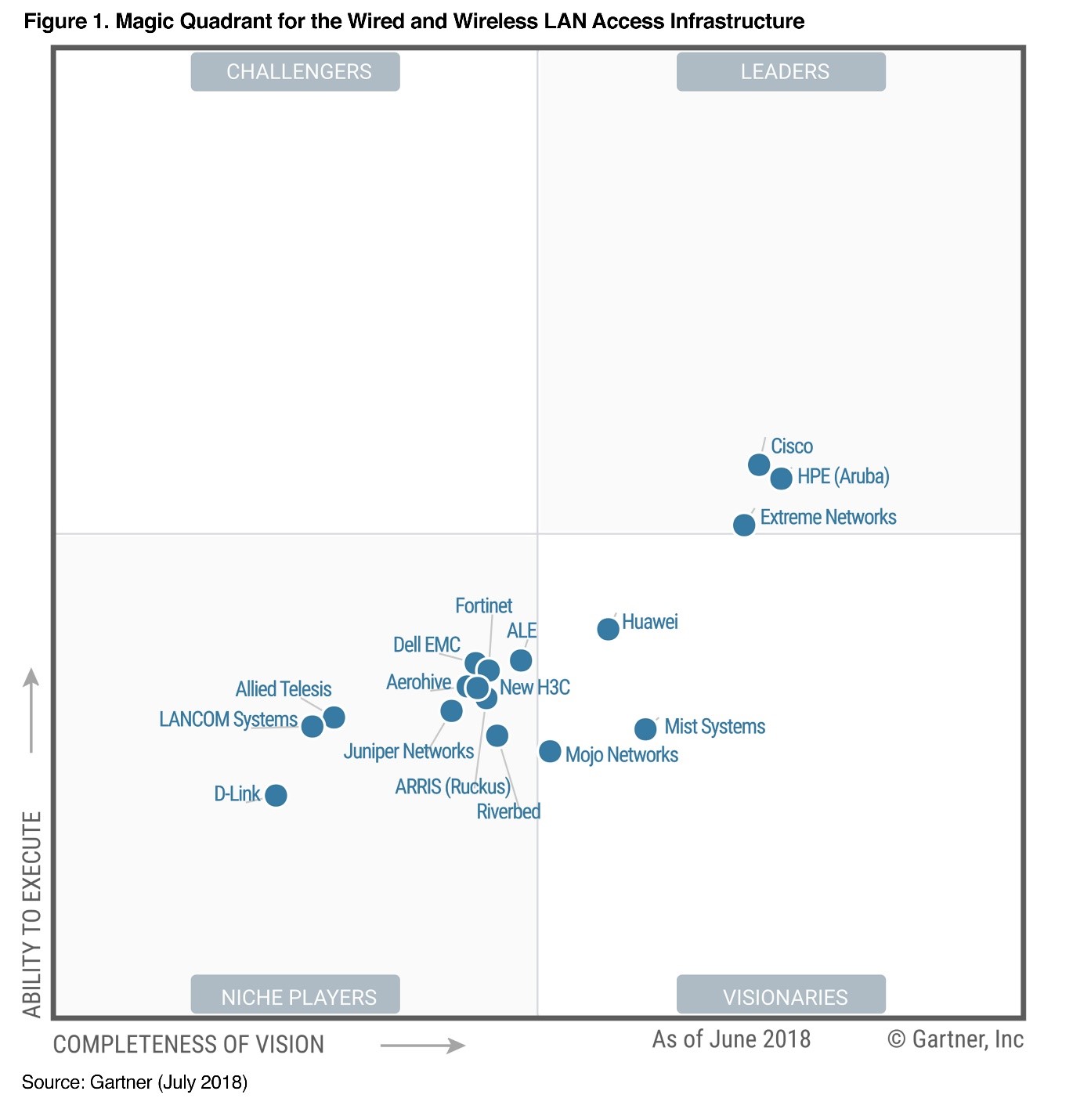When we released Cisco DNA Center last year, we knew that it was going to make a big splash in the industry. After reading the evaluation in the 2018 Gartner Magic Quadrant for the Wired and Wireless LAN Access Infrastructure, we now know it for sure.
DNA Center is a complete software-based network automation and assurance solution. It is a critical piece of the Cisco Intent-Based Networking strategy which lays the foundation for the digital networks of tomorrow. Many of you know that Intent-Based Networking is proactive management that simplifies operations, provides security throughout the network and is an investment for innovation. DNA Center is an integral part of that Intent-Based Networking package as it provides visibility, management and an automated way to deploy wireless networks with simplified configuration and image management. Powered by best practices, the solution enables high-density networks with the click of a button.
Thanks to DNA Center, we believe industry experts are aware that Cisco is again outpacing much of its competition. Cisco again has been positioned as a Leader in the Gartner Magic Quadrant for the Wired and the Wireless LAN Access infrastructure. Cisco achieved the highest position for Ability to Execute.
We believe innovations like DNA Center allow Cisco to maintain a position at the front of the industry and its position as a Leader continues to be recognized.
The breadth of the Cisco portfolio allows product flexibility to more accurately align the right solution with the customer’s current and future technical and business needs. Every customer is different and there is no one-size-fits-all solution. Whatever the management, performance, or deployment model, Cisco supports customer needs with exceptional reliability.
To read more of the Gartner Magic Quadrant report, click here.
Gartner Magic Quadrant for the Wired and Wireless LAN Access Infrastructure, Bill Menezes, Christian Canales, Tim Zimmerman, Mike Toussaint, 11 July 2018. This graphic was published by Gartner, Inc. as part of a larger research document and should be evaluated in the context of the entire document. The Gartner document is available upon request from Cisco. Gartner does not endorse any vendor, product, or service depicted in its research publications, and does not advise technology users to select only those vendors with the highest ratings or other designation. Gartner research publications consist of the opinions of Gartner’s research organization and should not be construed as statements of fact. Gartner disclaims all warrantees, express or implied, with respect to this research, including any warrantees of merchantability or fitness for a particular purpose.



Hire me
Great read on DNA Center!
Great news – thanks for sharing.
Great news, but not unexpected. Cisco's wireless portfolio has been catching up with Aruba/HPE quickly, and there is not much to choose between the two vendors now. Cisco's rich feature set in this space, including DNA Center, truly rubber stamps their intent to be an industry leader in the wireless arena.
@JohnGibbs These are just my two cents, for what it is worth. I am not a rep, partner, or employee of either company. I am not quite sure where the Cisco catching up to Aruba WiFi comes from. I have a lot of experience with both, and IMO think it is the opposite when it comes to enterprise grade, dense deployments of WiFi. Both perform well, but we cannot forget that it wasn't until last year the Aruba added centralized RF management via their Mobility Master portfolio. Until then, all RF decisions were being done locally at each AP (ARM), with each AP thinking of channel selection and power levels from a "what's best for me as a single AP"method. The vast majority of Aruba deployments are still not on that 8.x code with MM intelligence, so they are still working to put the issues related to waves of APs jumping channel to channel behind them. Yes, I know, we can do static channels under the assumption that nothing will change to ruin our channel plans after we leave a site. But, we have to be ok with a cell going down and staying down until local interference leaves on its own or we go manually retune a site…. This, static channeling, works well in a venue with free WiFi, take it as it is, but not in enterprise, where workers going offline in that cell stops enterprise productivity or drops the c-suites ability to continue a video conference. That being said, there are somethings at the client management side, i.e. AirGrouping and captive access for guests, that Aruba still may do better, but without reliable RF delivery and client connectivity, does it really matter…. Here's another example of them playing catch-up; Aruba published videos and openly talked about how much a waste of time dual-5GHz radios were when Cisco announced, and how they could never really get you the benefits Cisco advertised. Then this year Aruba comes out with their 350 series. Now, all the sudden it makes sense to dual-5GHz radio designed APs. Again, this is just my two cents and my comments are not representative of the beliefs or views of any associations I have.